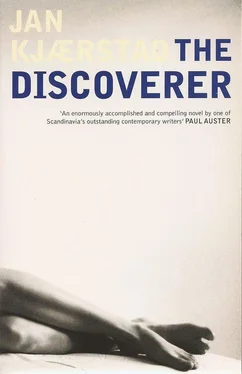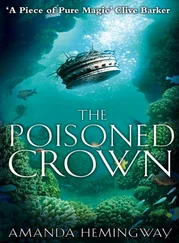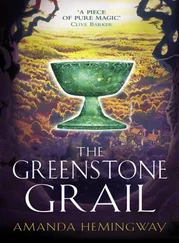Jan Kjaerstad - The Discoverer
Здесь есть возможность читать онлайн «Jan Kjaerstad - The Discoverer» весь текст электронной книги совершенно бесплатно (целиком полную версию без сокращений). В некоторых случаях можно слушать аудио, скачать через торрент в формате fb2 и присутствует краткое содержание. Год выпуска: 2009, Издательство: Arcadia Books, Жанр: Современная проза, на английском языке. Описание произведения, (предисловие) а так же отзывы посетителей доступны на портале библиотеки ЛибКат.
- Название:The Discoverer
- Автор:
- Издательство:Arcadia Books
- Жанр:
- Год:2009
- ISBN:нет данных
- Рейтинг книги:5 / 5. Голосов: 1
-
Избранное:Добавить в избранное
- Отзывы:
-
Ваша оценка:
- 100
- 1
- 2
- 3
- 4
- 5
The Discoverer: краткое содержание, описание и аннотация
Предлагаем к чтению аннотацию, описание, краткое содержание или предисловие (зависит от того, что написал сам автор книги «The Discoverer»). Если вы не нашли необходимую информацию о книге — напишите в комментариях, мы постараемся отыскать её.
The Discoverer — читать онлайн бесплатно полную книгу (весь текст) целиком
Ниже представлен текст книги, разбитый по страницам. Система сохранения места последней прочитанной страницы, позволяет с удобством читать онлайн бесплатно книгу «The Discoverer», без необходимости каждый раз заново искать на чём Вы остановились. Поставьте закладку, и сможете в любой момент перейти на страницу, на которой закончили чтение.
Интервал:
Закладка:
Mr Dehli’s use of maps to illustrate māyā had its sequel in a Christmas show put on by the pupils in the classroom. It was actually during this same show that Leonard — or Leonardo, rather — despite restless rumblings from his classmates, showed his first 8 mm cine film, a bleak drama in which Jonas and Pernille played a boy and a girl in black polo-neck sweaters, standing back to back in an open field with a huge bulldozer in the background.
Jonas was a much bigger hit on his own and in the flesh. He did an impression of Mr Dehli, wearing a jacket and a bow tie deliberately and hilariously askew. ‘Today I am going to tell you about Maya,’ he said, getting a laugh right away by playing on his own misapprehension and pronouncing māyā like the girl’s name. All the maps had been pulled down beforehand — and at the very back hung an affectionate caricature of Mr Dehli himself. Gesticulating wildly and brandishing his pointer Jonas worked up to his big conjuring trick. But just as he was about to tug on the first cord, acutely aware that all eyes were upon him, he suddenly began to feel very self-conscious, was struck by a terrible fit of shyness, with the result that he tugged too hard; he thought the map was stuck, so he yanked as hard as he could, the map rack came away from the wall and the whole kit and caboodle came crashing down on top of him, to the riotous glee of the class. Jonas must have lifted the pointer on instinct, in an attempt to defend himself against this avalanche of countries and continents, because he came round to find himself sitting on the floor like an emperor draped in a many-layered cloak, with the pointer stuck through the map of Asia. ‘That was the day when the world came tumbling about my ears,’ he was fond of saying.
Mr Dehli showed that he had appreciated this performance by laughing louder than anyone else. ‘I think you’re going to be a great discoverer,’ he said, straightening Jonas’s cock-eyed bow tie on the way out. I should perhaps add that the pointer had not pierced the map just anywhere. Jonas had actually run it right through Samarkand. Thus providing, you might say, the perfect illustration of māyā . In any case, from that day on, Samarkand stood for him as a reality behind reality, he developed a belief that there was a Samarkand behind Samarkand.
The memory of those maps and his attempt to demonstrate the concept of māyā cropped up more than once during the making of his televised portrait of Edvard Munch, a programme which also showed quite clearly how intent Jonas Wergeland was on challenging people’s deeper awareness, or the way they saw things — what Mr Dehli would have called their philosophy of life. Although Thinking Big attracted record-breaking audiences, Wergeland was less interested in viewing figures than in the imprint which the series might leave on people’s minds. In this respect he was a true programme-maker; he wished to programme, or reprogramme, the Norwegian people’s way of thinking.
Owing to his own unforgettable encounter with the wall decorations in one of Oslo’s public buildings — an experience to which we will return — Jonas was seriously tempted to focus on Munch’s popular murals for the Oslo University assembly hall, but he eventually came down in favour of an early phase in the artist’s life. In the key scene, the young Munch was shown standing in a large circular room with many windows. Viewers saw him walking slowly from one window to the next; gazing, clearly moved, out of each of them in turn, as if looking out onto a bewildering and troubling world. Thereafter he sat down on a bench in the centre of the room, his elbow propped on his thigh and his chin resting on his fist, like Rodin’s celebrated sculpture ‘The Thinker’. Here was a man at what was arguably the most crucial stage of his life; a man who had just lost his father, a man who had had the benefit of a couple of inspiring sojourns in France, in St Cloud and Nice, a young man who had only just begun to see what he wanted to do in his art, to find his own style. And underpinning the images of this man deep in thought, nothing but the sound of a brush on canvas. To the viewers it must have seemed as though the deep musings, or memories, around which his thoughts revolved had generated the vision or metamorphosis that now occurred, with first one, then another window, one prospect then another — still accompanied only by the rasp of a brush — turning first into a translucent panel, not unlike a transparent map, and then into a painting, until the circular room was seen to be a gallery, its walls hung with works recognisable as Munch’s own, canvases covered with lines and colours which — one could tell — Munch had seen in his mind’s eye. The world had become art.
Jonas Wergeland had filled the room with over twenty pictures painted by Munch around this time, including a number from the series which Munch would later dub The Frieze of Life. His idea, one which may even have begun to germinate while he was in France, was to create a series of paintings which would present an overall picture of existence, of all the stages of human life. The canvases which formed a circle round Munch showed individuals and landscapes reduced to timeless, placeless images. All inessentials had been omitted. Here were such pictures as ‘Night’ and ‘Evening’ — later renamed ‘Melancholy’; viewers spotted ‘The Sick Girl’, ‘Puberty’ and ‘Death in the Sick-room, ‘Jealousy’ and ‘Despair’ — Jonas did also include a few pictures painted one or two years later. The camera captured a room which bore little resemblance to other rooms containing nineteenth-century Norwegian art, those in the National Gallery in Oslo, for example, full of works by Tideman and Gude, Fearnley and Dahl. You did not play Tchaikovsky in such a room, Debussy or Stravinsky might have done at a push.
In the next scene, Munch was seen pacing restlessly back and forth, round the walls of the room, continually taking down pictures, switching them about, as if he could not decide which paintings should hang next to one another. He evidently felt that there were hidden links between some, or all, of the works, some inner bond. At long last he appeared to be satisfied, sat down again on the bench in his Thinker position. And once more one had the sense of great mental exertion, the impression that Edvard Munch was endeavouring to think about all the pictures, all of these key experiences, at once. And as if it were a result of this very process of visualisation, of the profound insight thus attained, something happened to the pictures: they began to live and breathe. Each painting turned into a screen filled with moving pictures. The works of art, the flat canvases, came to life, with each film presenting a plot, a drama which corresponded with the subject matter of the picture, before they all faded, in perfect sync, into exactly the same scene: a couple kissing, closely entwined, a man and a woman at one of life’s sacred moments. Edvard Munch sat in the circular room, watching as all twenty-odd paintings, or films, became identical, with every scene showing a couple clinging to one another, almost merging into one, in a kiss.
After a prolonged close-up of Munch’s anxious features, his eyes, the camera pulled back to reveal a room once more lined with Munch’s famous works, the kissing couple turned back into the painting entitled ‘The Kiss’. At this point in the programme Jonas Wergeland appeared on screen, in the foreground, in the guise of a reporter and advised in a whisper, before disappearing again just as quietly, that we were in Berlin, the year was 1892 and Edvard Munch had been invited by Verien Berliner Künstler, the Berlin Society of Artists, to exhibit his pictures in the Architektenhaus, in the circular gallery. The exhibition was about to open.
Читать дальшеИнтервал:
Закладка:
Похожие книги на «The Discoverer»
Представляем Вашему вниманию похожие книги на «The Discoverer» списком для выбора. Мы отобрали схожую по названию и смыслу литературу в надежде предоставить читателям больше вариантов отыскать новые, интересные, ещё непрочитанные произведения.
Обсуждение, отзывы о книге «The Discoverer» и просто собственные мнения читателей. Оставьте ваши комментарии, напишите, что Вы думаете о произведении, его смысле или главных героях. Укажите что конкретно понравилось, а что нет, и почему Вы так считаете.












